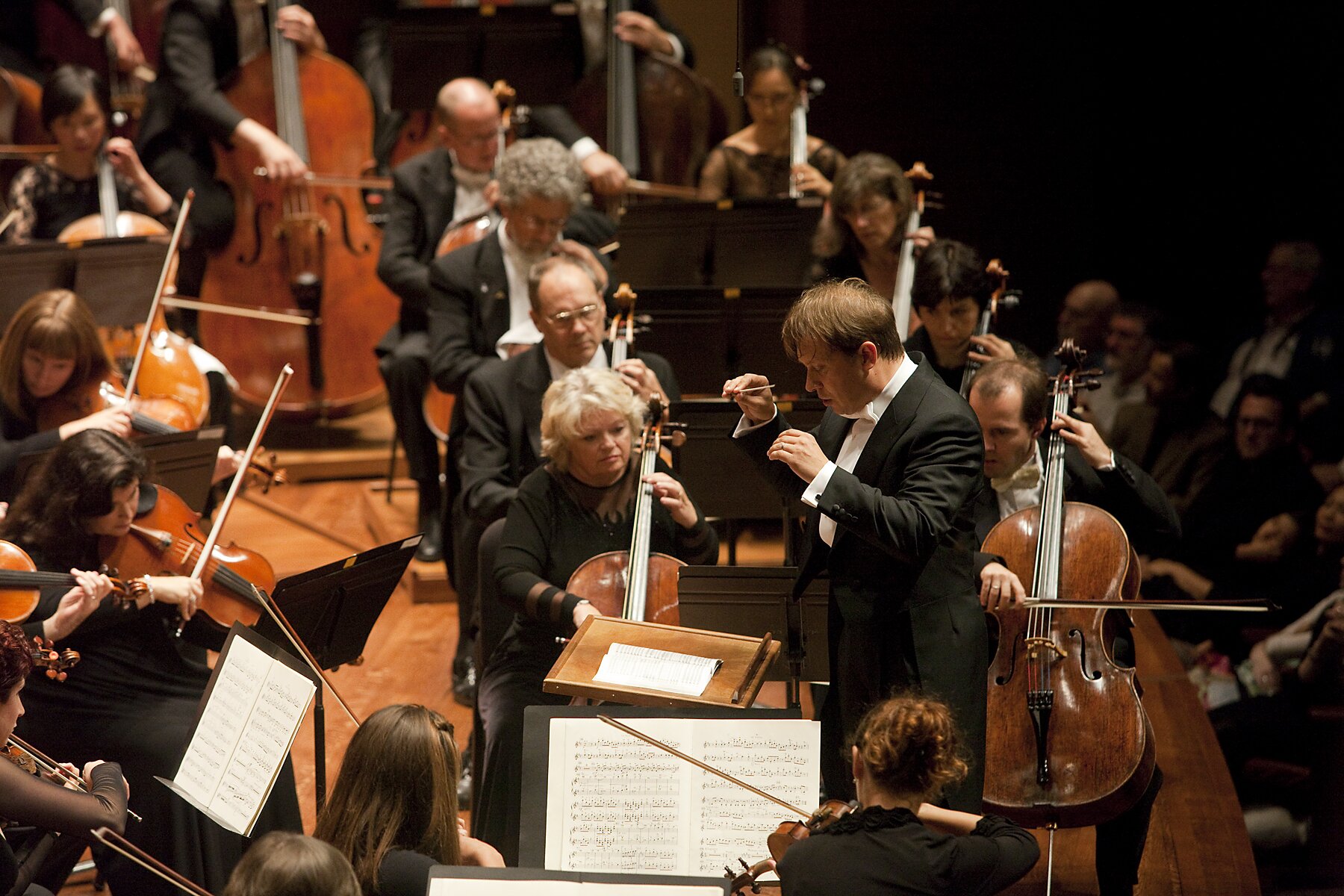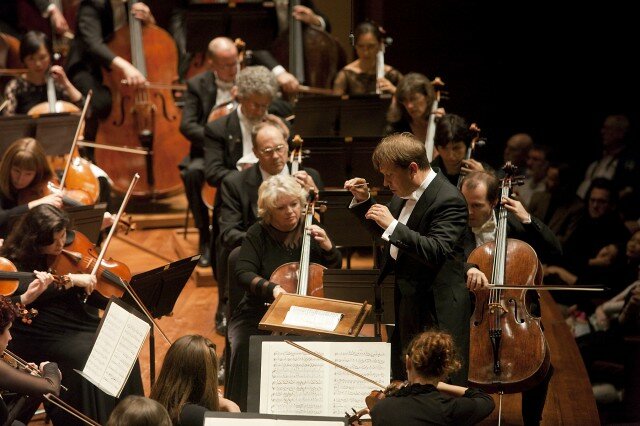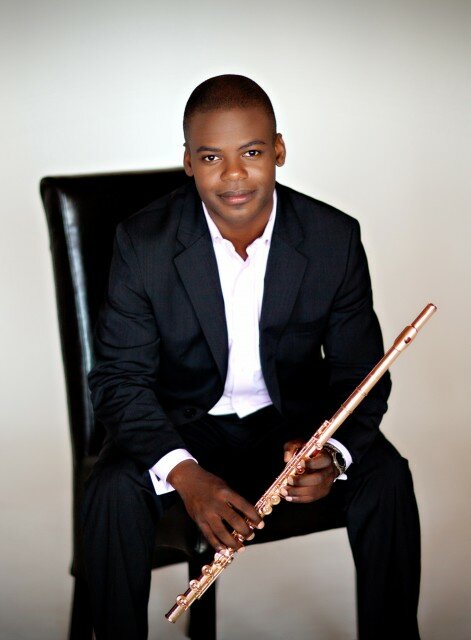Saturday night at Benaroya Hall saw the dressiest Seattle crowd since the opening of McCaw Hall, with silks, satins, sparkles and high fashion abounding. The occasion? Ludovic Morlot’s debut as music director of the Seattle Symphony. The auditorium was packed, following a pre-concert cocktail party and preceding a gala dinner.
Proceedings on stage began with a brief, graceful welcome by board chair Leslie Jackson Chihuly, who mentioned also that conductor, now laureate, Gerard Schwarz and his wife Jody were present, as were Morlot’s wife Chizlane and two children.
And then the concert began.
As well as Morlot, two more musicians made their orchestra debuts at this concert: principal cello Efe Baltacigil and principal flute Demarre McGill, both experienced performers who seemed very much at home in the repertoire. Two positions remain open, that of concertmaster, and unexpectedly and to our loss, principal horn, as John Cerminaro has quietly retired.
Morlot chose wisely for his gala program. All four works were immediately accessible to the audience, two of them familiar favorites, one being French, as is Morlot. The third was an appropriately classical opener stylishly played, Beethoven’s Overture to The Consecration of the House, and the fourth showcased Morlot’s adventurous musical spirit and that of solo cellist Joshua Roman, who has had his own following here ever since his two years as principal cellist with the Seattle Symphony.
So often people turn away from concert programs which include a composer name they don’t know–particularly if it is from the 20th, or heaven forbid, the 21st century. Morlot is determined to undo that prejudice and at the same time encourage the performing of music from genres which have rarely been welcome on a symphony stage. Yet many well-known performers from other genres have written in a symphonic vein, though that may not be where their fame lies. Take Frank Zappa, whose “Dupree’s Paradise” comes up in next week’s symphony concerts.
In this gala, it was a concerto for cello and wind orchestra by 20th century classical and jazz pianist Friedrich Gulda. He frequently mixed both genres on the concert stage and he does in this 1980 work.
While the stage was being reset, Morlot took the microphone to say a few words, including his thanks to the community and the orchestra for making him and his family welcome, and he also took time to thank the stagehands, by name, for the work they do. Talking about the outreach he hopes to do, bringing music to people, and people to Benaroya, he mentioned that school children will be able to come free to Masterpiece series concerts on a companion ticket. He talked a bit about Gulda, and his passion for jazz and improvisation as well as his ability to play and record impeccable classical performances.
The cello role in the Gulda is nonstop for the entire 30 minutes of this five-movement work. The mood swings from folk type melodies to jazzy sections and back without a hitch, the jazzy parts backed by a couple of electric guitars and drumset. Much of the music is recognizable dance rhythms such as a German laendler going oom-pah-pah to a lullaby to a Sousa-type march with the tuba belting it out. The third movement is an extended unaccompanied cadenza for the cello, with brief snatches from the Marseillaise, Reveille and more, each of which brought appreciative laughs from the attentive audience.
It isn’t a profound work, but it is great fun and musically solid, just right for a concert such as this. Roman did it proud, his technique as unerring as ever, his tone singing, his musicianship making the most of the work’s arches and shape. Morlot too made the most of it, keeping the balance and the vigor going throughout.
Morlot’s own abilities showed up best in Gershwin’s An American in Paris. In his hands it became a joyous, exuberant performance, yet with seamless connections between sections, and nuance which left one hearing it fresh.
Bolero, by his compatriot Ravel, is a crowd-pleaser, not for any exciting musical content, but for the way its constant repetition grows from soft to huge, and by the contrast in different instruments playing that melody. Morlot brought snare drummer Michael Werner, who repeats the same brief phrase from start to finish, to perform at the front of the stage. I’ve never heard this piece begun so softly. It seemed no one was playing at all, but the cellists’ hands were moving, as were Werner’s, and only gradually, as one listened harder, did the sound begin to emerge and grow.
In the middle, Morlot, a violinist, put down his baton and joined the first violins for a spell, while around him the musicians continued as closeknit as before. Towards the end, he took up his baton again, but it showed, which perhaps he intended, the coherence and professionalism of the orchestra, that, where necessary, it can play without leadership.
All in all, this was an auspicious beginning to Morlot’s tenure here. Let’s hope that packed audience repeats at many more concerts. Preview the many, varied programs to come here.






